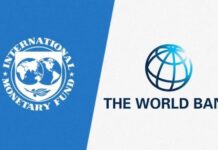Displacement
There are currently 2.6 million people displaced by drought and conflict in Ethiopia, Somalia and Kenya: 2 million of whom are internally displaced persons (IDPs), and 600,000 refugees. In Somalia, an estimated 770,000 people have been internally displaced by drought in 2017, with 36,000 newly displaced in August, mainly originating from Bakool and Bay with the predominant destination being Baidoa town. Conflict-related displacements have decreased, with an estimated 155,000 remaining uprooted. However, 25,000 people were newly displaced in August, mainly originating from Marka district and the Lower Shabelle region. In Ethiopia, unconfirmed reports indicate that thousands of people have fled from the Somali region following violence between Oromo and Somali ethnic communities. Separately, flash floods following heavy rains since 28 August have displaced more than 13,400 people in four districts of Gambella region. The National Flood Task Force has prepared a response plan for at least 100,000 people risking displacement by flash floods along the Awash river basin this month.
Malnutrition
Response is underway to the deteriorating nutrition situation in the Somali region of Ethiopia, while the situation in northern and central Somalia remains of concern and the nurses’ strike in Kenya continues to impact the response. In Ethiopia, an estimated 375,000 children may become severely acutely malnourished (SAM) by the end of 2017, while some 3.6 million moderately acutely malnourished (MAM) children and pregnant and lactating women (PLW) require supplementary feeding. The Central Emergency Response Fund (CERF) has allocated US$10 million for the provision of blanket supplementary feeding for children under age 5 and PLW in 22 critically drought-affected districts of Somali region. The blanket supplementary feeding, coupled with general food distribution and targeted supplementary feeding, is expected to help stabilize the rapidly deteriorating nutritional situation in the Somali region. In Somalia, the nutrition has continued to deteriorate, especially in the northern and central parts of the country. Some 1.2 million children are projected to be malnourished over the next one year period, a 33.3 per cent increase since the beginning of the year. This includes over 231,829 (including IDPs) who have or will suffer severe acute malnutrition (SAM). In Kenya, the nurses’ strike continues to impact the nutrition response, with 50 per cent to 80 per cent of health facilities non-operational in six drought-affected counties. A total of 47,986 children (57 per cent of annual target) and 91,319 children (53 per cent of annual target) have been registered for the treatment of SAM and MAM respectively.
Food Security
There are 14.3 million food insecure people across Ethiopia, Somalia and Kenya, including 10 million severely food insecure, with the situation deteriorating in Somalia. In Somalia, there are now 3.1 million severely food insecure people, including an estimated 2.3 million people experiencing crisis (IPC Phase 3) levels of food insecurity, and 800,000 facing emergency (IPC Phase 4) food insecurity, up from 439,000 in February. The risk of famine (IPC Phase 5) persists in the worst affected areas, particularly in the northeast and some IDP populations. In Kenya, there are 3.4 million food insecure people. This includes 2.6 million people already facing severe food insecurity IPC Phases 3 and 4), and 800,000 people facing Stressed (IPC Phase 2) food security who are expected to fall into crisis levels from August to October 2017. In Ethiopia, some crops planted in June/July have wilted in Amhara, Oromia, Southern Nations, Nationalities, and Peoples’ Region (SNNP) and Tigray due to late and erratic summer rains. However, improved rains in August provided an opportunity to re-plant in some areas, before the planting window closed mid-September. Late and erratic rains, coupled with the ongoing Fall Armyworm infestation, are expected to lead to a significantly reduced harvest in October/November, and food insecurity is taking a toll on the country’s inflation rate, which reached a 22-month high of 10.4 per cent in August following a persistent rise of food costs, especially cereal.
Disease Outbreaks
Cases of Acute Watery Diarrhoea (AWD)/Cholera continue to be reported in Ethiopia, Kenya and Somalia, although response efforts in Somalia are making progress in containing the disease.
In Ethiopia, a 27 per cent increase in the number of Acute Watery Diarrhoea (AWD) cases was reported nationwide during the last week in August, mainly due to spikes in new cases reported in Amhara and Tigray regions and a resurgence of the outbreak in Afar region. The outbreak is stabilizing in Oromia, SNNP and Somali regions. In Kenya, five counties have active cholera outbreaks with 2,743 cases including 44 deaths (Case Fatality Rate (CFR) 1.6 per cent) reported. Most new cases are from Nairobi. Dengue has reportedly been controlled in Mombasa and Wajir, with 1,537 cases reported from the two counties, including one death. The number of cases of Kala-azar continues to rise, with 457 cases and seven deaths reported in Wajir and Marsabit counties to date. In Somalia, 16,000 suspected cases of measles have been reported in 2017. A measles vaccination campaign scheduled for November-December 2017 is underfunded. August case numbers of AWD/cholera (77,627) significantly declined signaling progress in containment efforts.




